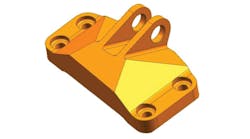Looking back at his former life as senior vice president of research at IBM (IW 500/10), Paul Horn remembers a time before open innovation -- a competitive, suspicious era when innovative and great, transformative ideas were only allowed to grow in a tightly sealed vacuum.
"When we built the Almaden Laboratory at IBM in the early 1980s, we put it south of Silicon Valley on purpose," he recalls. "In those days, our biggest fear was the leaking of intellectual property out into the valley."
See Also: Manufacturing Innovation & Product Development Strategy
The worry was not how to get ideas in from an open environment, he says, but how to keep people out.
Fast forward a few decades, and that model has been totally reversed.
Today's research breaks down the walls of the labs, of the compartmentalized business units, of even the company itself. The secrecy of yesterday's insolated IP practices has given way to a new model that pulls in fresh ideas and finds thought leaders across the world, across industries and across competing markets -- a global exchange from the masses to the enterprise: a global crowdsourcing innovation system.
And the current king of this model is that old king of innovation, GE (IW 500/6).
Crowdsourcing the Future
"For any industry to be successful, you really need to develop communities or ecosystems of partners and thought leaders," says Christine Furstoss, technical director of Manufacturing and Material Technologies at GE Global Research.
"No sustainable, established industry technology exists without multiple players, multiple styles of thought, multiple ways of growing," she explains. "We feel like one of the best ways to stimulate that, to find the newest and best ideas, is to start with open collaboration."
To that end, GE has spent the last two years on a crowdsourcing bender, pledging about $20 million in prizes for the best new products, designs and processes created by the general public for internal projects that would have been conducted in secret a few years ago.
And nowhere is the company pursuing this initiative more aggressively than with its new obsession with 3-D printing.
"We're trying to find thought leaders in this area -- people who may know through a technique they've devised or a piece of software that they've found or just their own experiences what is the best way to design with additive for real industrial parts," Furstoss explains. "We're really at the birth of industrial additive technology. This is a way for us to build support for that community of makers."
GE currently has two design contests under way in this arena -- one seeking novel uses for advanced materials and high-precision design for possible use in medical imaging equipment and other products, and the other calling on the maker community to design a 3-D printable engine bracket strong enough to be used on a commercial jet.
Combined, the two contests will award up to $230,000 to contributors across the globe, be they seasoned professionals or clever novices. But the reward for GE is far greater, says Furstoss.
"We're never at a loss for great and exciting ideas at GE," she says. "We have more than 50,000 engineers working for us, we have these commercial relationships and supply chain teams, but we're interested in how we can improve how we implement these ideas and how we work with others to make these ideas realities."
And that means opening up the doors to the masses.
"We have a platform in place that can put a student in his dorm on the same plane as our engineers," she says. "We're making sure that people who may have ideas, may have skills, may have things to offer have an opportunity to bring them forward, no matter who they are."





